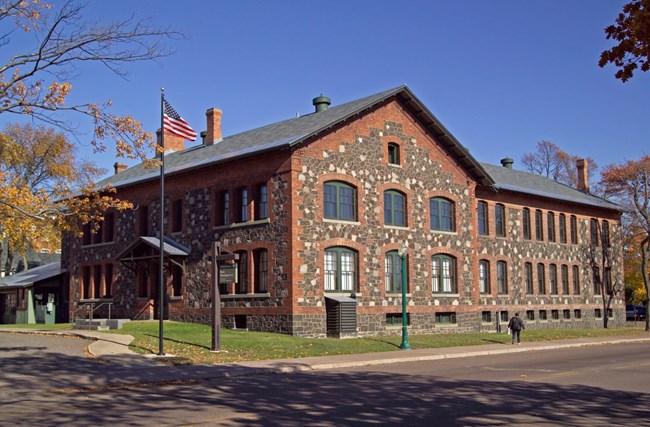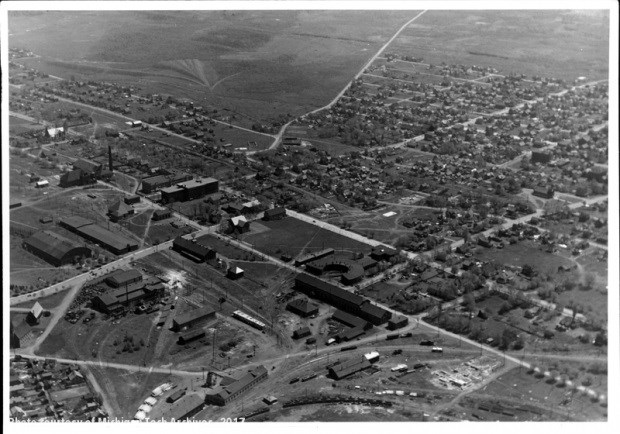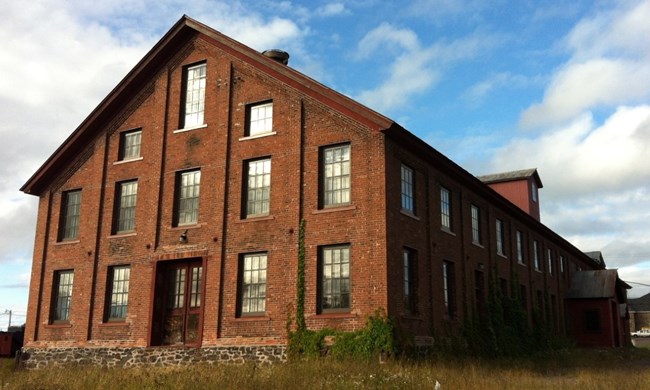
NPS Photo ArchitectureBroadly speaking, architecture can be thought of as the art of building. Nearly 2,000 years ago, Roman architect Vitruvius wrote that a good building should have durability, utility, and beauty, and we recognize these same qualities in a good building today. When we think of historical architecture, often the first buildings that come to mind are those magnificent examples that were formally designed to impress and to endure: here in the Copper Country, many early churches, schools, and civic buildings were built with Jacobsville Sandstone and imported brick. 
Photo Courtesy of Michigan Technological University Archives Cultural LandscapesA cultural landscape is defined by the NPS as a geographic area, including both cultural and natural resources and the wildlife or domestic animals therein, associated with a historic event, activity, or person, or exhibiting other cultural or aesthetic values, and architecture is one facet of the cultural landscape of the Copper Country. The composition and arrangement of the built environment today reflects the area’s history of copper extraction and processing, as well as the associated activities such as lumbering, commerce, and simply dwelling. Where copper was found, mines were established, and housing was built within walking distance of the mines; villages and towns grew up near the larger and longer-lasting mines. Mines were connected to one another and to mills by roads and rail, and mills to docks and smelters with still more. The historical industrial landscape of the Keweenaw was an active, interconnected network of people and the places they worked and lived. Today’s descendant landscape has evolved, but ample evidence remains to tell the fascinating and nationally significant history of the Copper Country. 
NPS Photo Historic Preservation at Keweenaw National Historical ParkHelping to conserve a living cultural landscape like the Keweenaw is an interesting and challenging undertaking. Keweenaw National Historical Park is a partnership park, and only has direct responsibility for a fraction of the thousands of historic buildings and structures that remain in the Copper Country’s postindustrial landscape. Furthermore, since it is constantly changing and evolving, how can preservation principles even be applied? Our conservation work follows the guidance provided by the Secretary of the Interior’s Standards for the Treatment of Historic Properties. While historic preservation may be the treatment option most people are familiar with, the Standards also provide guidance for restoration, rehabilitation, and even reconstruction work. In addition to caring for those buildings owned by the park, we provide technical assistance to Keweenaw Heritage Sites and other partners, as well as to individual property owners located within the Calumet and Quincy Unit boundaries to help owners make informed decisions that may affect the heritage value of their properties.
Questions? Please email us!
|
Last updated: April 30, 2025



